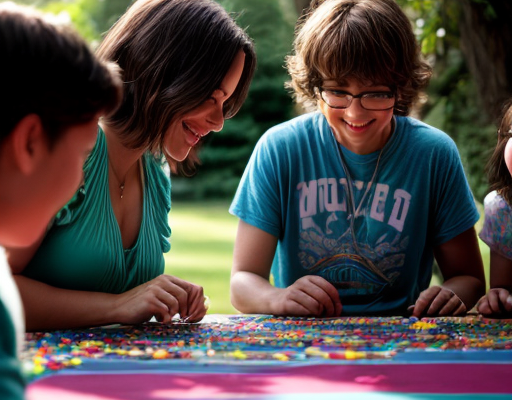
How to Start a Family Puzzle Swap with Friends and Neighbors
How to Start a Family Puzzle Swap with Friends and Neighbors
Engaging in family puzzles is a timeless activity that brings people of all ages together, promoting teamwork and providing a sense of accomplishment upon completion. But what do you do with a puzzle once it’s completed? One brilliant solution is starting a puzzle swap within your community. This article provides a step-by-step guide on how to organize and enjoy a family puzzle swap with friends and neighbors.
Understanding the Benefits of a Puzzle Swap
Swap activities offer multiple benefits, from cost savings to community building. A puzzle swap specifically encourages cognitive exercise, sparks joy and creativity, and cuts down on the need to constantly purchase new puzzles. It’s an eco-friendly solution that extends the life of each puzzle and fosters closer ties amongst participants.
Steps to Initiating Your Puzzle Swap
Step 1: Gauge Interest
Before diving into the logistics of a puzzle swap, the first step is to determine if there is sufficient interest among your circle of friends, family, and neighbors. You can send out a simple survey or bring it up during casual conversations to get a feel for who might want to participate.
Step 2: Establish the Ground Rules
Once you’ve confirmed interest, it’s important to set some ground rules. Decide on aspects like the acceptable puzzle size, difficulty levels, age-appropriateness, and condition standards. Having clear guidelines ensures everyone is on the same page.
Step 3: Create an Inventory System
To keep track of the puzzles, develop an inventory system. This could be as simple as a shared spreadsheet where participants log the puzzles they contribute and which ones they have borrowed.
Step 4: Organize the Swap Events
Decide if you’ll swap puzzles at regular intervals or on an as-needed basis. Monthly swap events or a continuous swap station at a local community center could work well, depending on your group’s preferences.
Building and Managing Your Puzzle Swap Community
Communication is Key
Continuous communication among swap members is fundamental for success. Consider creating a social media group, email list, or chat group where members can share updates, puzzle recommendations, and swap requests.
Inclusivity and Fairness
Ensure that the puzzle swap remains inclusive by catering to different age groups and interests, and operate on a fair ‘take one, leave one’ basis.
Choosing the Right Puzzles for Your Swap
Variety and Difficulty
Variety is the spice of life, and this rings true for puzzle swaps. Include puzzles of varying difficulties and themes to cater to a wide range of tastes and skill levels.
Quality and Completeness
To maintain the quality of the swap, ensure that puzzles are complete and in good condition. This can be managed through routine checks and responsible borrowing practices.
Organizing and Hosting Successful Swap Events
Creating a Welcoming Environment
The swap event should be inviting and enjoyable. Consider setting up tables for live puzzle starts, refreshments, and a comfortable seating area for discussion and interaction.
Swap Event Logistics
Plan the event’s logistics well in advance. This includes determining the location, time, duration, and any necessary supplies, such as tables for displaying puzzles.
Promoting Your Puzzle Swap
Word of Mouth
Word of mouth is a powerful tool for promotion. Encourage your current members to invite others who might be interested in joining the puzzle swap adventure.
Local Advertising
Utilize community bulletin boards, local online forums, and social media to advertise your puzzle swap events to the broader community. This can attract new members and keep the puzzle selection fresh and diverse.
Expansion and Growth of Your Puzzle Community
Collaborating with Local Businesses and Libraries
To grow your puzzle community, consider partnerships with local businesses and libraries. They may be willing to host puzzle swap events or act as drop-off and pick-up points for puzzles.
Hosting Special Themed Swaps
Spice up your swap events by hosting themed events throughout the year. For example, holiday-themed puzzles in December or large-scale puzzles for an extra challenge can attract attention and keep members engaged.
Maintaining Engagement and Excitement
Keeping the Community Active
To maintain interest, keep the community active through regular communication, events, and maybe even puzzle-themed competitions or challenges within the group.
Feedback and Evolution
Periodically ask for feedback from the community to understand what’s working and where there is room for improvement. Be open to evolving the concept to better suit the needs of your group members.
Conclusion: The Joy of Puzzling Together
A family puzzle swap with friends and neighbors not only brings new life to once-completed puzzles but also reinforces community bonds, promotes cognitive benefits, and creates an ongoing cycle of entertainment and challenge. Follow this comprehensive guide to starting a family puzzle swap and enjoy the myriad of benefits it brings to your community.

